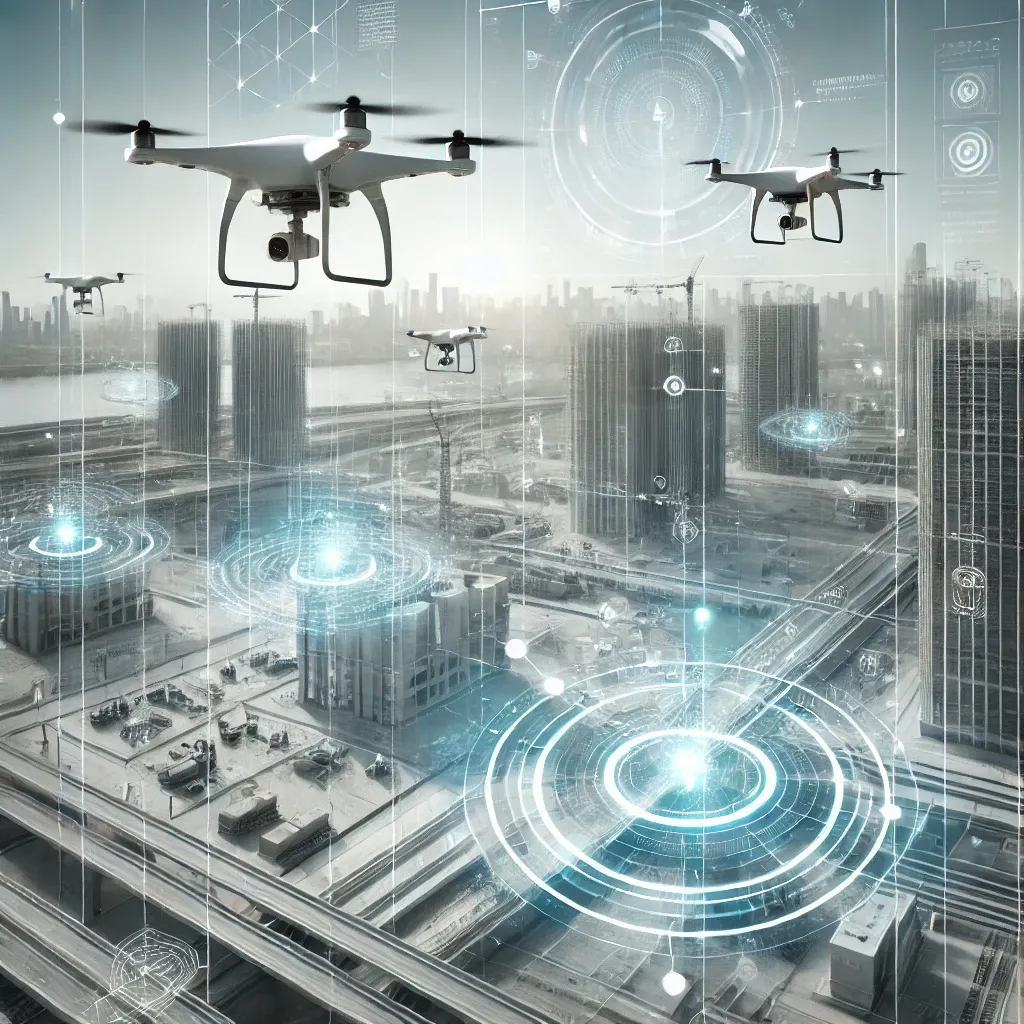The construction industry is facing a paradigm shift: automation and digitalization are revolutionizing the way construction projects are planned, implemented and monitored. The use of drones, combined with innovative technologies such as digital twins and building information modeling (BIM), plays a key role in this.
Drones as a game changer in the construction industry
Drones enable fast, precise and cost-effective data collection from the air. They provide high-resolution images, 3D scans and accurate survey data that were traditionally time-consuming and expensive. Construction companies use this data for:
– Topographical surveys before the start of construction,
– Real-timemonitoring of construction progress,
– Inspections of hard-to-reach areas such as facades or roofs.
Digital twins: the virtual image of the building
A digital twin is an exact virtual replica of a physical building. Data collected with the help of drones is incorporated into these digital twins and enables:
– Simulation options, for example for load tests or energy efficiency analyses,
– Real-time updates to detect deviations between the construction plan and reality at an early stage,
– Efficientmaintenance, as the digital twin is also used as a documentation and planning tool after the construction phase.
BIM and the integration of drone data
Building Information Modeling (BIM) is the foundation of modern construction planning. It combines 3D models with comprehensive information on materials, schedules and costs. Drones provide precise data that can be seamlessly integrated into BIM systems. This creates a fully digital work process that:
– improves planning accuracy,
– usesresources more efficiently,
– simplifies collaboration between all project participants.
Advantages of automation through drones
The integration of drones into construction processes brings numerous benefits that go far beyond efficiency gains. Here is a deeper insight into the most important advantages:
1. time and cost savings
Drones significantly shorten time-consuming tasks such as surveying, progress checks or inspections. What used to take days or weeks can now be completed in just a few hours.
– Reduced labor costs: Manual surveying work or scaffolding for inspections are largely eliminated.
– Faster project processing: Real-time data enables problems to be identified and rectified quickly.
2. precision and accuracy
Data captured by drones is extremely precise and allows detailed analyses.
– Surveying accuracy: Thanks to state-of-the-art cameras and sensors, drones deliver data in the millimeter range.
– Error reduction: Deviations between the construction plan and implementation can be detected and corrected at an early stage, which minimizes rework.
3. increased security
Dangerous tasks, such as inspections of heights, facades or unstable structures, can be carried out by drones.
– Reduction of accidents at work: Employees do not have to go into high-risk areas.
– Bettermonitoring: Regular aerial photography helps to identify potential safety risks such as material weaknesses or changes in terrain at an early stage.
4. comprehensive data documentation
Drones collect large amounts of data that are useful for the entire service life of a structure.
– Seamlessdocumentation: Progress reports and construction statuses can be recorded continuously.
– Long-term tracking: The collected data flows into digital twins and is still available for maintenance and renovation.
5. sustainability and resource optimization
Precise planning and monitoring means that resources can be deployed more effectively.
– Less material wastage: More precise data minimizes over-ordering or incorrect use of materials.
– Optimization of the construction process: Efficient planning saves time and energy, which reduces the ecological footprint of a project.
6. transparency and cooperation
Drones promote collaboration between all project participants through a transparent database.
– Bettercommunication: High-resolution images, 3D models and survey data are easy to share and understand.
– More efficient coordination: teams can work on the same data basis and make decisions more quickly.
7. progress monitoring in real time
Drones can provide regular images to document construction progress in real time.
– Adherence to schedules: delays are recognized early and can be addressed in a targeted manner.
– Avoidance of disputes: Precise documentation serves as the basis for transparent agreements and prevents misunderstandings between clients and construction companies.
Future outlook
The combination of drones, digital twins and BIM will continue to transform the construction industry. Automated processes, supported by AI and machine learning, could drastically reduce construction times and increase quality in the future. Those who invest in these technologies at an early stage will secure a clear competitive advantage.
With drones and digital models, we are shaping the future of construction – more efficient, safer and more sustainable. Are you ready to take your construction project to the next level?

